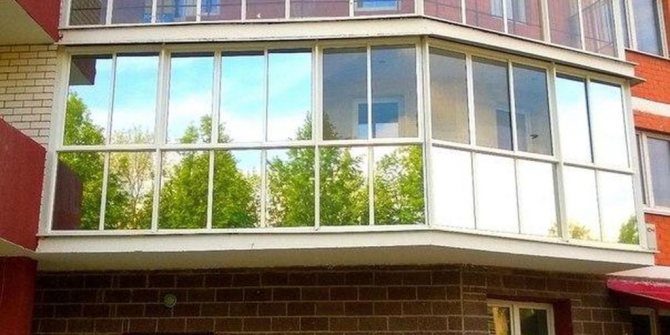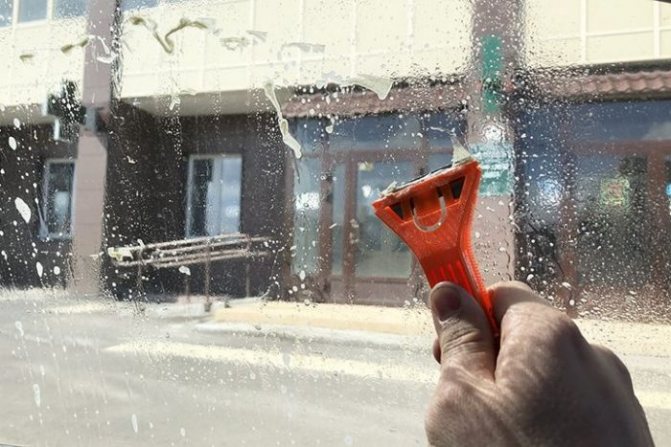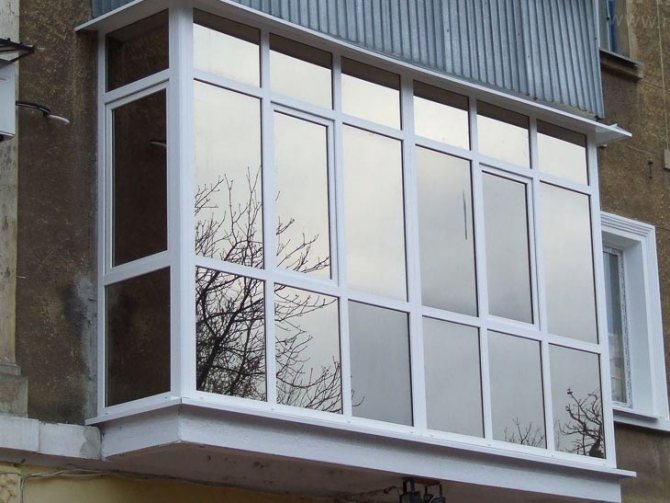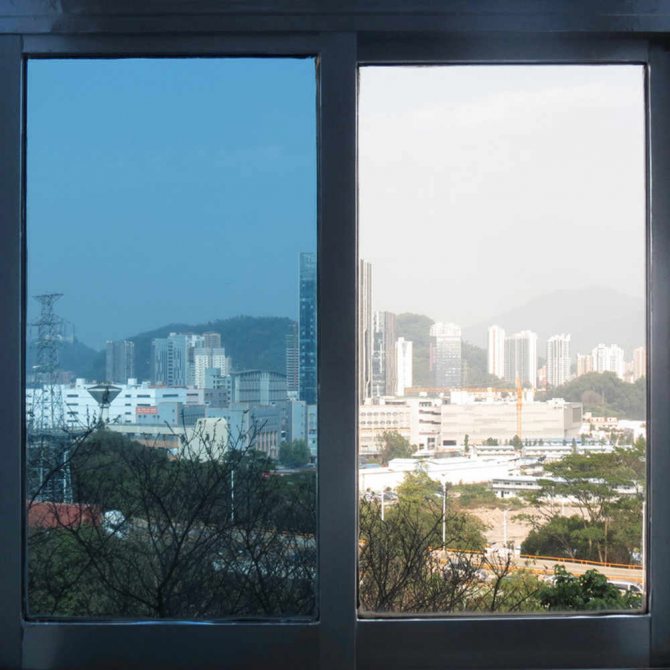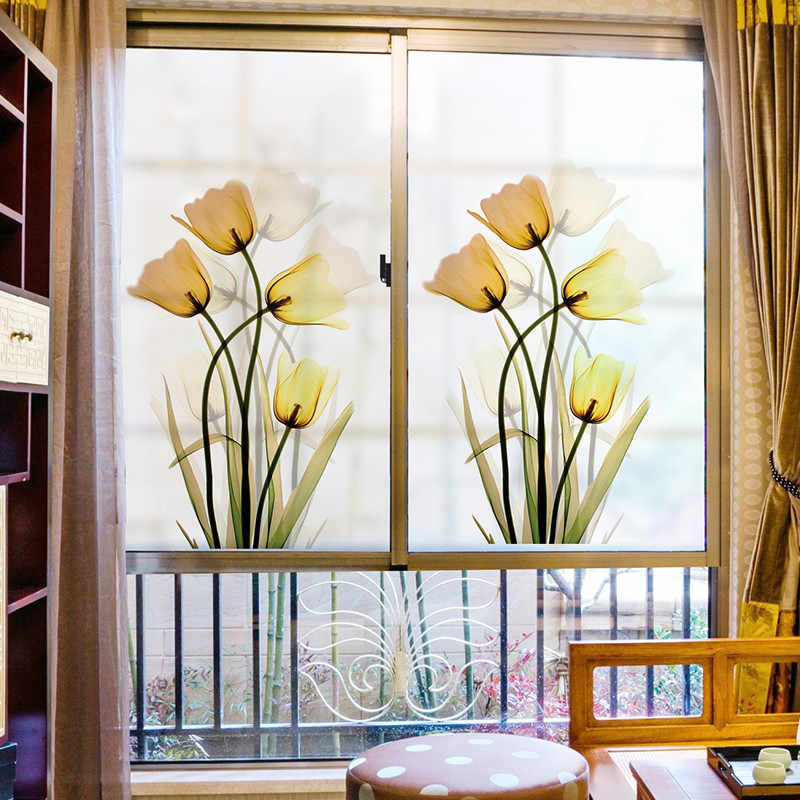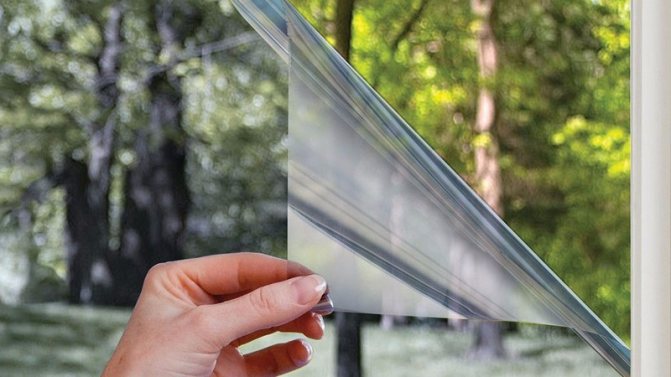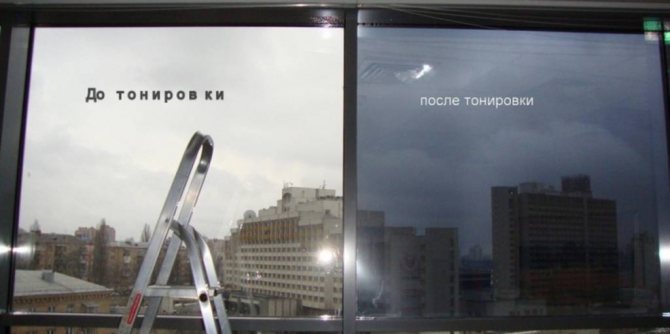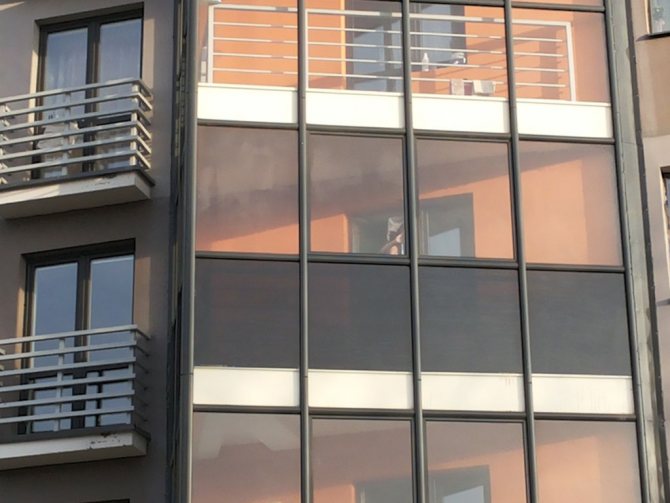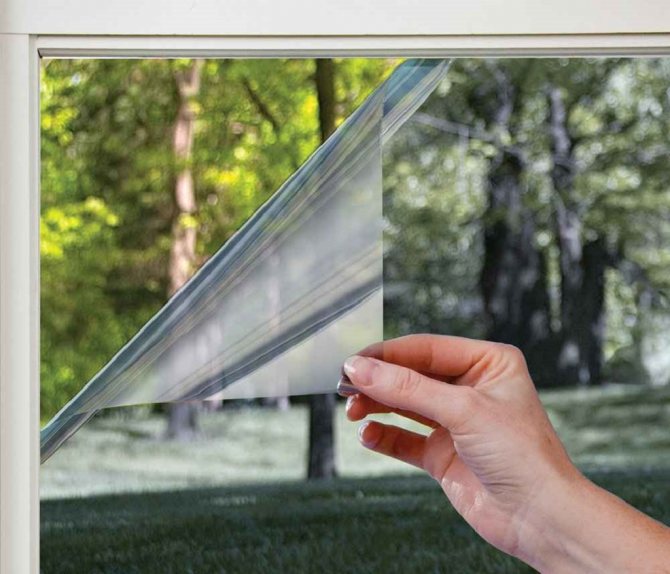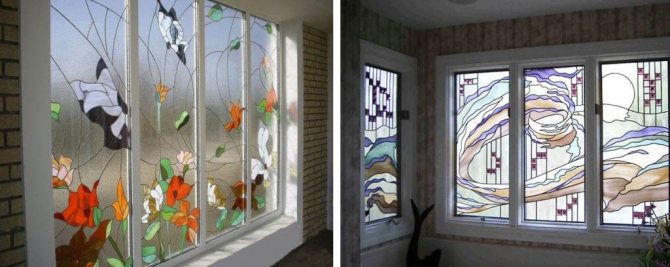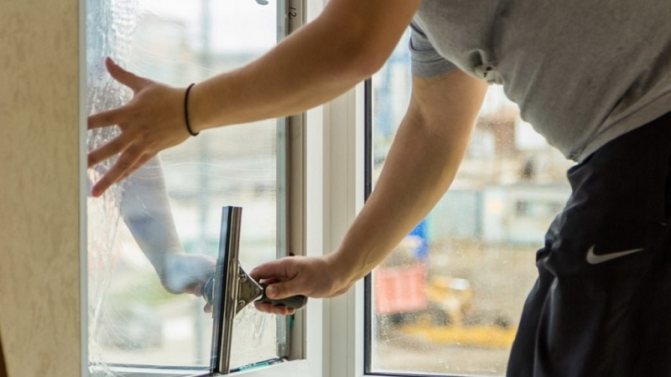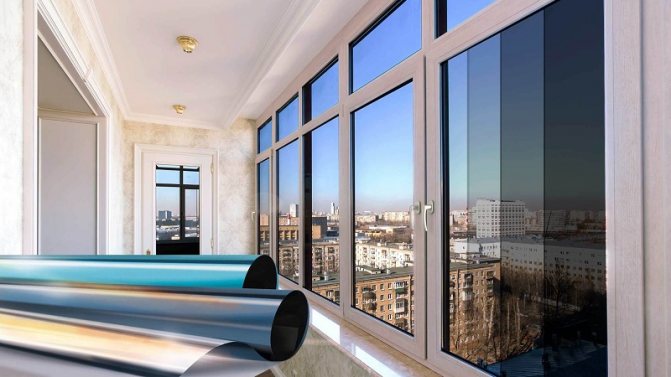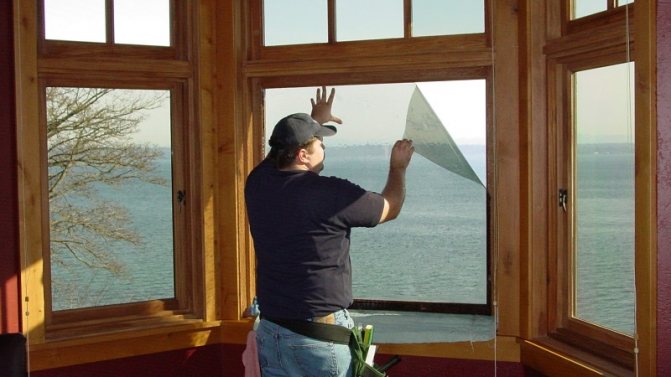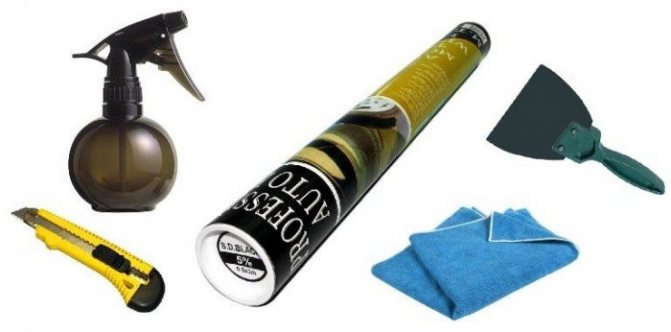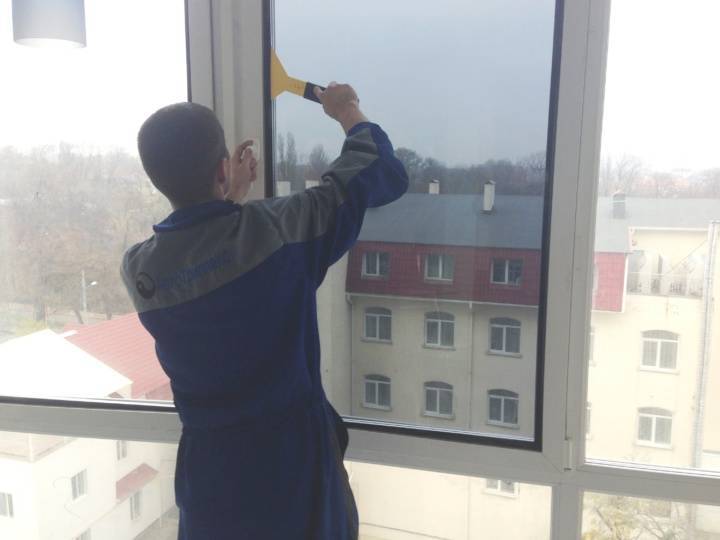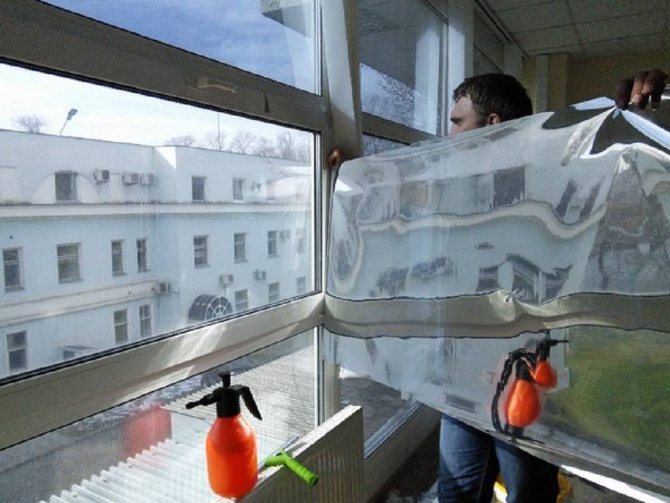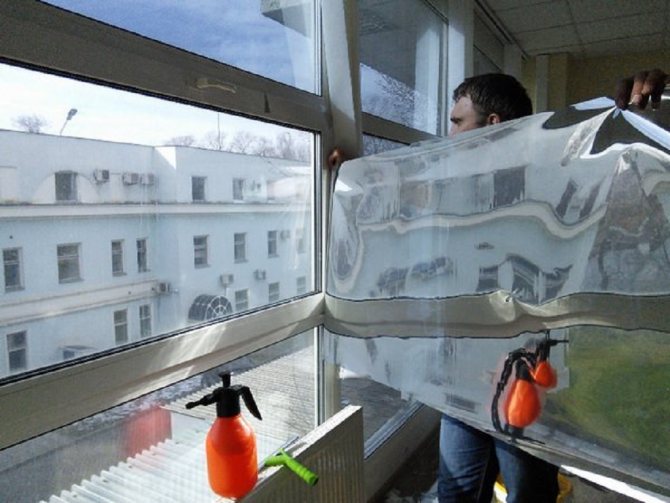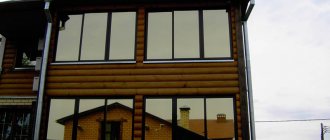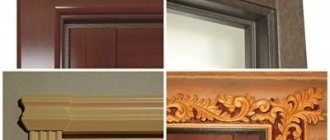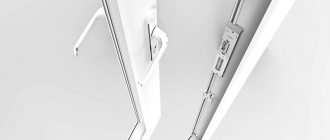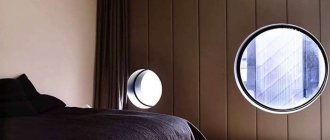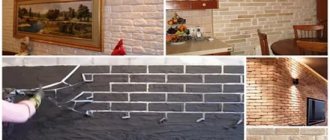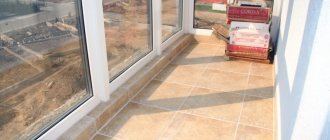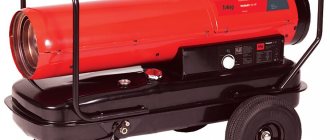Apartment owners, whose balconies and loggias are located on the sunny side, often suffer from extreme heat or too intense lighting in the summer. This can become a real problem, given that not only the balcony itself is heated, but also the room preceding it. The use of blinds and curtains does not always save the situation, since wood, fabric and especially metal elements are heated in the same way by strong sunlight through the glass. Therefore, one of the best options in this case would be the tinting of the windows of the balcony or loggia.
What is window tinting?
Windows are an integral part of every home. It is through them that sunlight penetrates into our houses and apartments. But sometimes there is a lot of this sunlight, which is why the air warms up too much.
In addition, under the influence of direct sunlight, furniture, appliances deteriorate, wallpaper fade, etc. In order to avoid all these troubles, tinted windows on balconies and loggias are used.
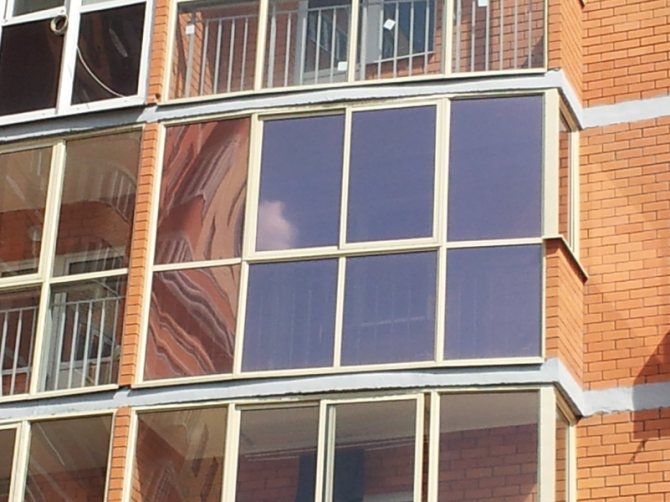
Tinted windows not only look much more attractive against the background of ordinary ones, but also give the inhabitants of the apartment a long-awaited coolness.
Window tinting involves covering the glass with special films. At your discretion, you can choose the degree of shading, giving preference to the darker / lighter option.
This service is quite expensive, but you can perform tinting on your own, without resorting to the services of specialists. To do this, you need to choose the right material and do the pasting yourself, but more on that below. First, let's figure out the types of tint films.
Types of tint films
Having finally decided on the need to tint the windows, not everyone thinks about how important it is to purchase high-quality material. As a rule, they purchase the first film they come across, but it is highly undesirable to do so.
First, you need to figure out what kind of protective films are, and then finally decide on the choice of a suitable material.
Option # 1 - sunscreen
Sunscreen or blackout film is one of the most popular materials for tinting balconies and loggias. It is able to trap about 98% of ultraviolet radiation.
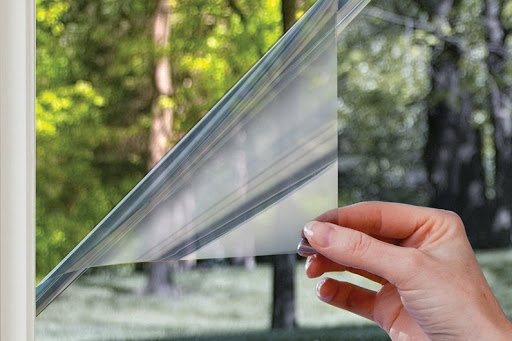

Having pasted over the glass on the balcony with a sun-protective film, you don't have to worry that the sun's rays will harm equipment or interior items
In addition to its main function - to protect the room from sunlight, such a film allows you to maintain a comfortable temperature on the balcony all year round.
Option # 2 - mirror
This version of the film is used to create a view from only one side of the glass, most often the inside.
At the same time, from the side of the street, the effect of a mirror surface is created, so that no one will see the furnishings of your loggia, a clothes dryer or a mess on the balcony.
Mirror film reflects up to 95% of sunlight and 75% of heat, thus creating a comfortable indoor atmosphere.
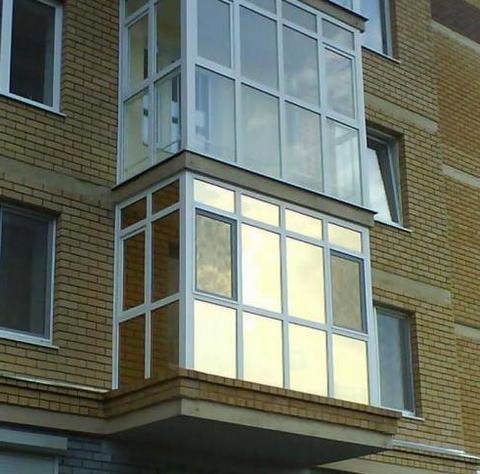

Mirror film can reduce the room temperature by 6-14 degrees Celsius. In addition, it becomes a reliable barrier to UV radiation.
Option # 3 - shockproof
An anti-shock or protective film is most often used to protect glass units by residents of the lower floors. It protects the glass from chips and cracks, for example, if a small stone is thrown into it.
In addition, the anti-shock film has fire-retardant properties and protects balconies from direct sunlight.
Option # 4 - decorative
This film option is perhaps the most diverse of all. Many colors, patterns and designs can be found on sale.
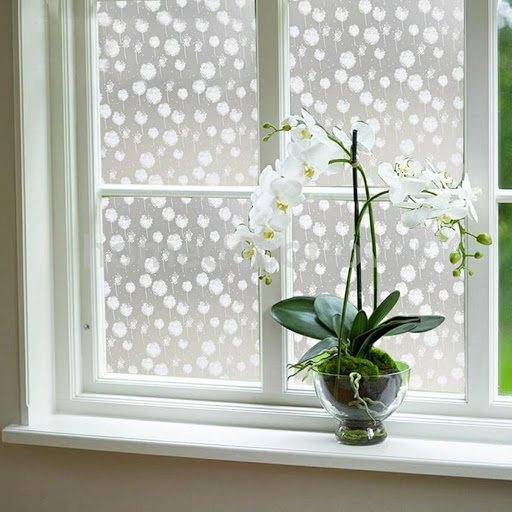

In addition to the variety of colors and patterns, decorative films may differ in their texture - there are matte and glossy options
If you wish, you can choose an option that fits perfectly into any room design and, in addition to practical use, perfectly complements the interior.
Method 1.With removing the glass from the frame
This balconies tint takes more time and effort, but guarantees a high-quality result.
- Film;
- Scissors;
- Special roller or spatula to smooth out creases;
- Ruler;
- Soap solution of shampoo (liquid soap) and clean water;
- Spray;
- A clean cloth or sponge (soft);
- Clean work desk.
Step 1. How to tint the windows on the balcony? First, remove the glasses from the frames, wash them and dry them.
Step 2. Measure the dimensions of the prepared glasses.
Step 3. Spread the film on a flat surface and transfer the dimensions of the glass to it, leaving an allowance of 1.5-2 cm.
Step 4. Cut the material with scissors.
Step 5. Fill a spray bottle with soapy water and spray the entire glass surface with it.
Step 6. Divide the cut piece of film into two parts.
Step 7. Spray soapy water on the adhesive side. This will facilitate installation, as the film will stop involuntarily sticking to the glass.
Step 8. Carefully apply the film to the inside of the glass and smooth out the folds with a spatula.
Step 9. Cut the edges and insert the glass into the frames. Step 10. Not confident in your own abilities and are afraid that bubbles or dust may remain on the glass? Make the sticker in water (bath or wide basin). In this case, you need to wait until the glass is completely dry, and only then mount them in the frames.
Features of the choice of film
In order not to disappoint the result obtained, when choosing a tint film, be sure to pay attention to such an indicator as light transmission... It is expressed as a percentage and the higher this value, the higher the ability of the material to transmit light.
The next thing to look out for is film color... Of course, choosing the color of the film that suits the interior of the room is not so difficult, but do not forget that the color is directly related to the ability of the material to transmit sunlight.
| Film color | Transparency level,% |
| Silver | 15-50 |
| Purple | 15 |
| Gold | 15-35 |
| Bronze | 15 |
| Smoky | 20 |
| Green | 15 |
| Grey | 15-35 |
| Blue | 15-35 |
| Solar bronze | 20-35 |
Brand and price... You should also not save on material by purchasing cheap and low-quality products. It will be wasted money. Such material will not provide sufficient protection from sunlight, and is unlikely to last long.
Therefore, it is better to give preference to well-proven manufacturers. Among which are: Armolan, Professional Window Film, Sun Control, Ultra Vision, Eastman Chemical.
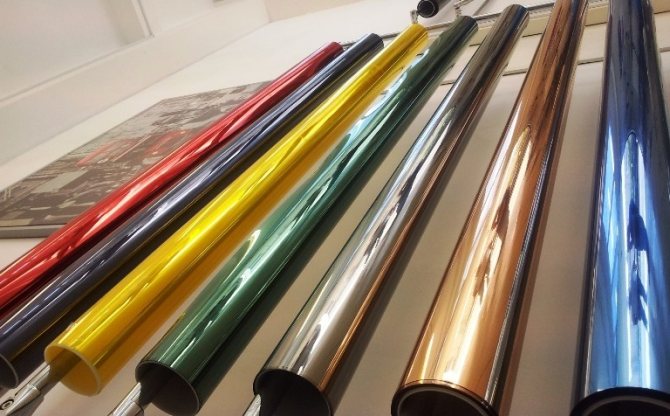

In the modern market, the choice of tint films is huge. Everyone can find a suitable option, but don't skimp on the purchase. Better to pay a little more and buy really high quality products.
It is also important anti-scratch protective layer... Most cheap materials simply do not have it, so leaving a mark on such a coating will not be difficult, which cannot be said about branded films that have reliable protection against mechanical damage.
If you live on the ground floor, it would be nice to purchase a protective film of class A1 - A3. With such a coating, insulating glass units will be almost impossible to break.
Self-tinting instructions
To save a little on glass tinting, you can do the work yourself. There is nothing complicated in this, and the tools that will be required for work are likely to be found in every home.
So, for work you need to prepare:
- tint film;
- window cleaner;
- spray;
- microfiber cloth;
- stationery knife;
- plastic or rubber spatula (the second option will be preferable).
Having prepared everything you need, you can start pasting the glass on the balcony.
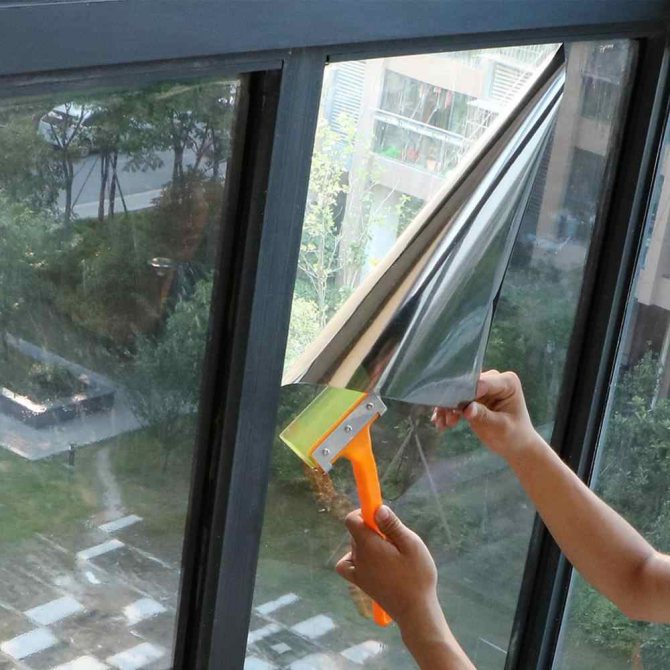

On some resources, you can find information that tinting can be carried out both outside and inside the room. This is not entirely true. The film, which was glued from the inside, will last much longer, since it is not exposed to snow, rain, it is easier to care for it
It is very important to thoroughly clean the glass before pasting windows. You can use a robot vacuum cleaner for windows to clean the canvas from dirt and dust. Then, using a window cleaner, alcohol or a special agent, degrease the surface.
Make sure that not the slightest trace of dirt remains on the glass. After all, even the slightest lint or speck of dust, once under the film, can cause bubbles or delamination.
At the next stage, you need to measure the visible part of the glass and cut out a piece of the necessary size of glass from the film. This can be done in advance, even before cleaning the glasses, prepare blanks of the required size. This will save you some time.
Next, you need to sprinkle the glass surface with water from a spray bottle, free some of the film from the protective layer and gently attach it to one of the upper corners of the glass.
Gently, using a spatula or a towel, glue the film to the glass. In the course of work, bubbles may appear, they will need to be immediately smoothed out with a spatula. Try to carefully smooth every millimeter of the film - this will affect its service life.
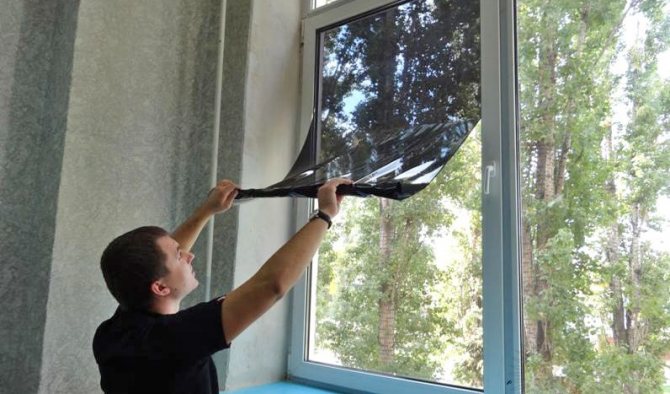

During work, it is important to monitor the air temperature in the room. So, you should not carry out work in rooms where the air temperature exceeds +35 ° С, or less than +10 ºС
When all the film is glued on, check if there are any protruding edges beyond the edge of the glass. If there are any, they can be carefully trimmed with a utility knife.
During the pasting of glass, you need to monitor the level of humidity in the room where the work is being carried out. Too dry / humid air can cause poor adhesion of the film to the glass, which, accordingly, negatively affects its service life.
Care
This material is not difficult to care for, but you still need to keep it in order. In this case, care must be taken not to damage the surface, so there are nuances of caring for the canvas. The main thing is not to use hard brushes that can damage the film.
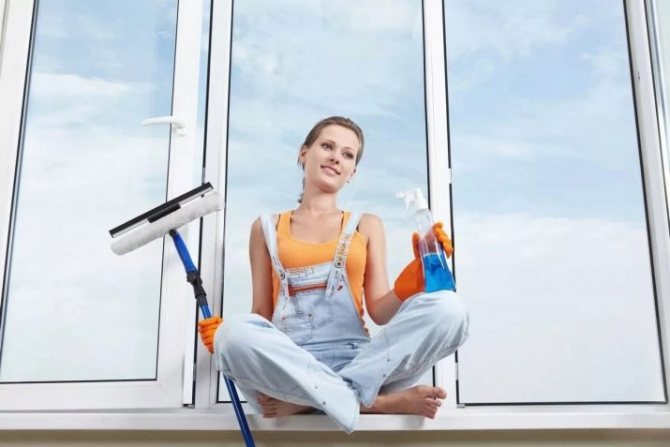

It is recommended to wash the surface only with a delicate detergent. A soapy solution is great. The procedure should be carried out with a soft sponge. Wet cleaning will be required monthly.
In the event that a bubble appears on the surface, it must be carefully filled with water through the needle of a syringe, and then ironed with a soft cloth. This will force the water out and the film will adhere to the surface again.
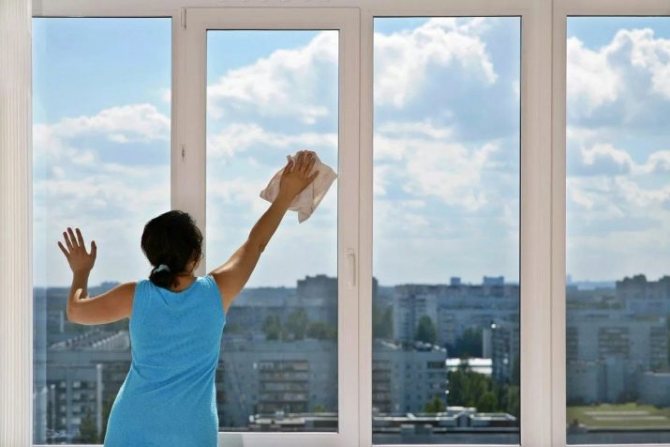

Advantages and disadvantages of tinted windows
The main advantage of tinting windows is dimming sunlight. This is especially true when the balcony or loggia is on the south side and the bright sunlight does not allow you to comfortably stay indoors.
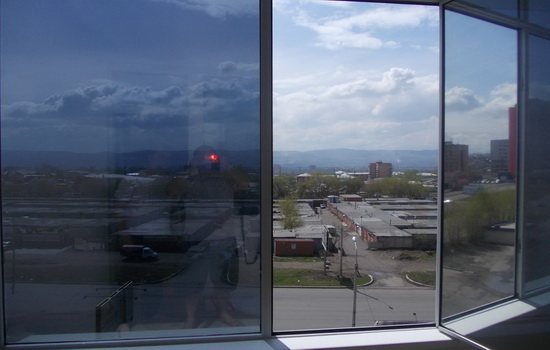

Tinted windows allow you not to draw up the curtains, even on a clear sunny day. They dim the sunlight significantly. In addition, if the choice is on a mirror film, then passers-by will not be able to see what is in the room from the side of the street.
Unlike curtains, films do not accumulate dust in incredible amounts, so they do not need such careful maintenance. To maintain cleanliness in the room, it will be enough only occasionally to wipe the windows from dust.
Another indisputable advantage of films is their durability. Having tinted the windows on the balcony, you will get rid of the bright sun rays entering the room for a long time.
In addition to protecting against bright light, the material also protects humans from the harmful effects of ultraviolet radiation, which is also important.
With the help of a decorative film, you can decorate any room, give it a kind of "zest".
It is also worth mentioning the fact that the tint film does not heat up from the sun's rays, but reflects them. This will help reduce the room temperature by a few degrees, which is especially true on hot sunny days.
The last-named advantage of tinting can be considered at the same time as its disadvantage, because in the winter season the air in the room will warm up much more slowly than in rooms with non-tinted windows.
Also, do not tint the windows that are located on the north side, since sunlight practically does not penetrate into such rooms.
Prices for toning balconies and loggias
| Color | Price for 1 m2 |
| Mirror Films | from 750 650 rub. |
| Tinting films | from 650 rubles |
| Athermal films | from 1500 rub. |
Check out the full price list for pasting windows with various types of film here.
The price includes: film, installation.
The price is indicated for a volume of at least 10 m2.
When ordering less than 10 m2, the price is calculated individually.
To more accurately calculate the cost of pasting windows with reflective film, call the measuring manager with the catalog. It's free.
